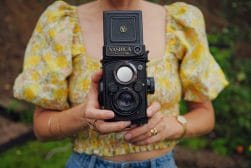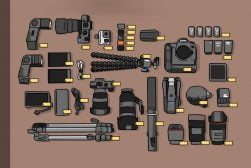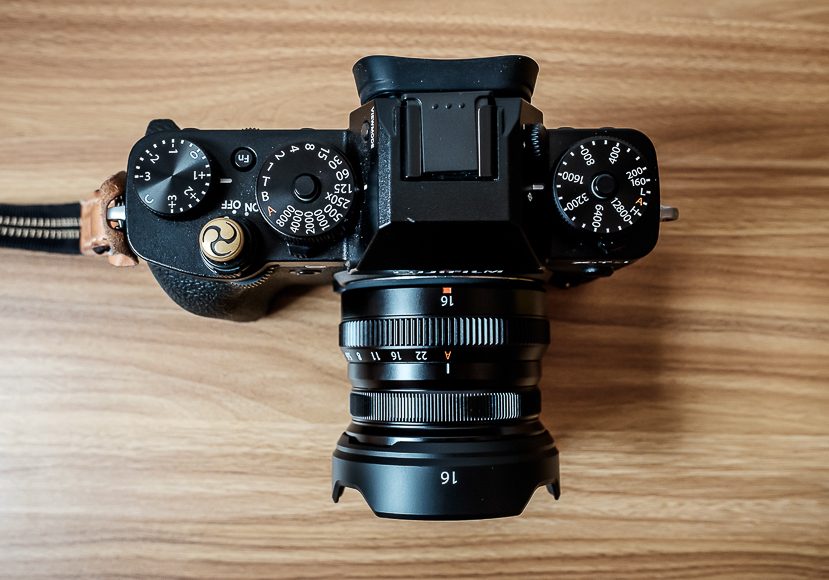
Buying And Selling Second Hand Fujifilm Gear
Explore the ins and outs of buying and selling second-hand Fujifilm gear, from finding the best deals to ensuring quality and authenticity.
Learn | By Greg Cromie
In this article, I’ll walk you through the joys and pitfalls of buying and selling second-hand Fujifilm gear.
I’m going to talk about the best place to sell second-hand cameras.
I’ll also look at how to approach the purchase of used photography equipment.
There’s no denying that buying and selling your Fujifilm photography gear on the second-hand market has its benefits.
However, buyer and seller beware; there’s a lot of risk involved if you don’t take the appropriate steps to do it right.
The pre-owned camera gear market is highly active and has been since well before the Internet was invented.
I remember seeing cameras and lenses for sale in print newspapers like Australia’s Trading Post.
Mind you, back in those days I also saw and often bought darkroom equipment for us dinosaurs.
The downside was traveling long distances to go and inspect, haggle over, and buy or sell your old camera gear.
Today, things are a little easier thanks to a wide range of online markets that frequently trade in pre-owned, pre-loved, and unique camera equipment.
Fortunately, if you’re a Fujifilm photographer like me, there’s much to peruse online in the hope of snagging a cracker of a deal on the last-gen or even first-gen X100.
Of course, the same applies if you’re looking for second-hand Canon lenses – but why would you?
Or perhaps you want to sell your original Fujifilm XF 56mm f/1.2 and take the leap to the newer XF 50mm f/1.0 – imagine the bokeh!
Plenty of Fuji photographers I know, including myself, have dabbled in the second-hand market to offload or pick up pre-owned gear.
However, I will explain what’s involved in much more detail and share some cautionary tales as well as some positive steps to success.
Why Buy Or Sell Second-Hand Fujifilm Gear
There are benefits to buying and selling second-hand Fujifilm cameras, lenses, and first and third-party accessories.
However, it’s also important to understand the reasons why photographers take these steps to move on or acquire gear.
Some photographers prefer to only purchase second-hand gear to begin with.
Provided it’s from a reputable and reliable seller, there’s no reason why a second-hand camera can’t continue its life in new hands, working all kinds of new magic with the light.
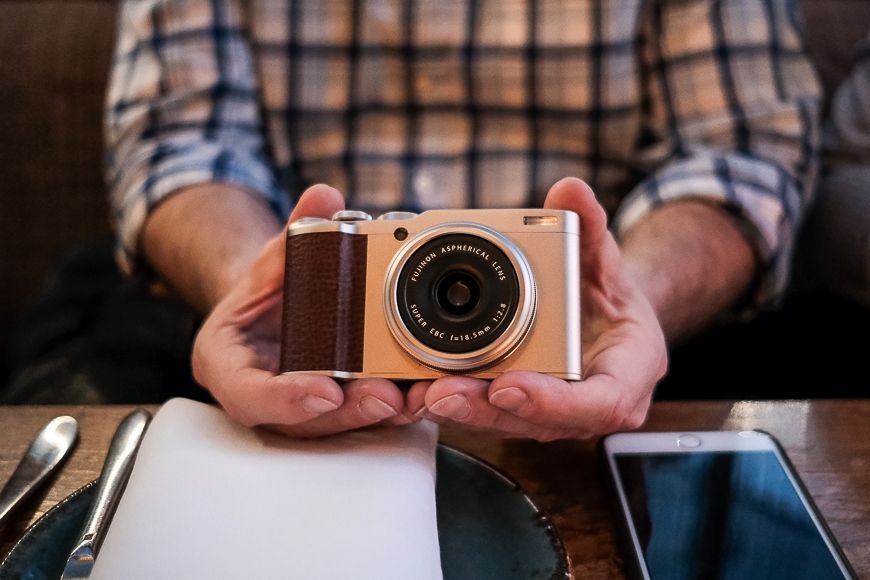
Some people can only afford pre-owned gear due to budget or being unsure if photography is their jam.
How Much Do You REALLY Know About Photography?! 🤔
Test your photography knowledge with this quick quiz!
See how much you really know about photography...

Starting with a loan or a cheap second-hand camera is a respectable way to get started in photography.
Use it as a starting point to build your skills, understanding, and output.
I know many photographers who acquire lenses or cameras only to realize they’re not using them as they hoped.
Why have an unused lens sitting on a shelf when it could be in someone else’s hands capturing stunning images?
Fujifilm photographers are no different to any other mob – I can’t believe I just said that!
Fuji shooters are the ultimate hunters of time and light to craft exceptional compositions of boundless glory.
Regardless, I see lots of buy, swap, and sell postings in the Fujifilm online communities.
Joining a community is a good way to get the lay of the land and see what people are selling and buying.
I belong to an Australian Fujifilm community. Our Facebook group has rules for selling your gear to fellow members.
What’s more, we are a closed community, so the people in the group haven’t just dropped in to sell gear and disappear.
Listing used photography equipment for sale within a safe community allows you to ask admins if a potential buyer is a trusted member. It’s not a flawless system, but it’s a starting point.
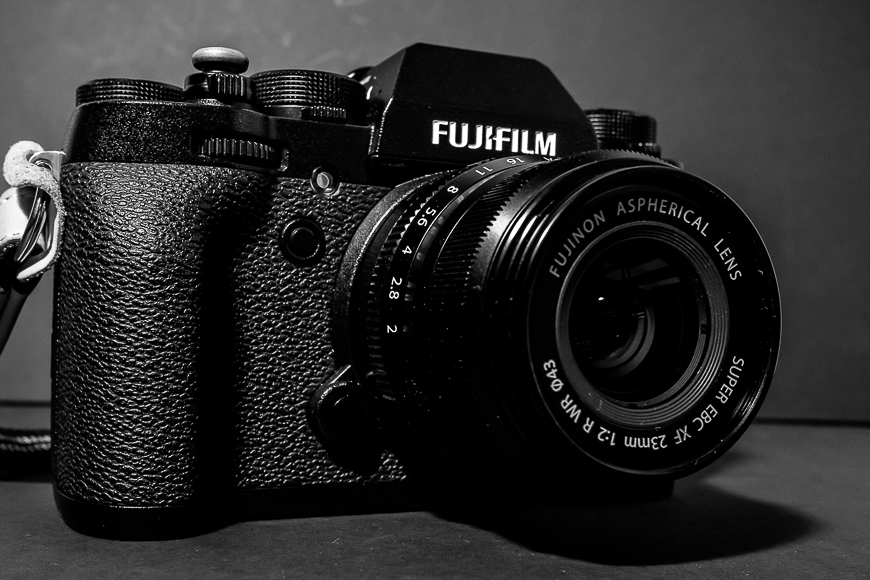
An additional benefit of selling your pre-owned kit is that you can invest the proceeds into new Fujifilm photography equipment!
I’ve sold my fair share of cameras, lenses, speedlights, triggers, lighting kits and more.
I often do so to upgrade my kit. I have terrible FOMO (Fear Of Missing Out), so when I know there’s a new Fujifilm camera or lens about to drop, I consider selling preloved gear to fund the new shiny toy!
Another acronym that I’ve attended therapy for is GAS (Gear Acquisition Syndrome).
It’s a terrible blight that sees you feverishly and recklessly acquiring more cameras, lenses, batteries, and SD cards than you will ever use.
GAS, combined with FOMO, is almost untreatable – but I have heard tales of people recovering fully.
Where To Buy And Sell Pre-Owned Fujifilm Cameras And Lenses
Community Groups
As I’ve mentioned, one of the best places to sell or buy pre-owned Fujifilm gear is via a local community.
A photographic community has more benefits than serving as a trusted marketplace.
They grant you peer support, feedback loops, and group get-togethers, plus having somewhere to display your work online is ace.
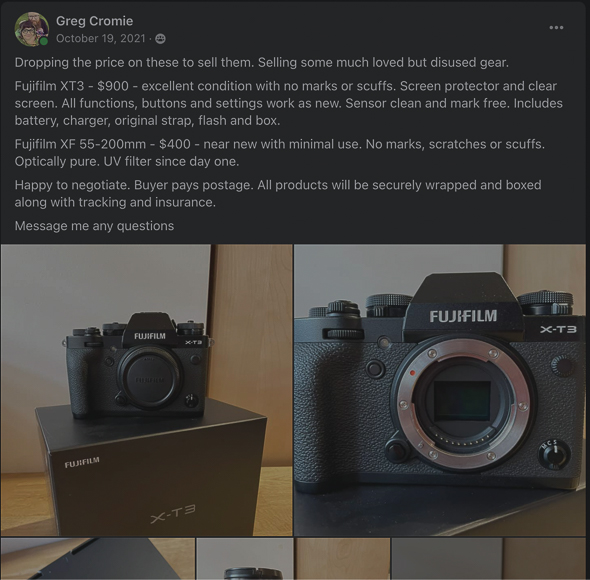
If you’re already a member of an online or face-to-face photography group, start there.
Enquire about the rules for buying and selling second-hand gear to and from members.
Ask administrators or long-standing community members their thoughts on a sale or seller.
Camera Stores
Many camera stores understand the value of trading in second-hand camera gear.
Years ago, I was a Canon DSLR shooter, and I bought pre-owned lenses from a local camera store.
Camera stores generally offer cash for old gear or store credit if you already see something in the display case.
Trading up is a good option, as camera stores will typically offer more in-trade credit than they do in cash.
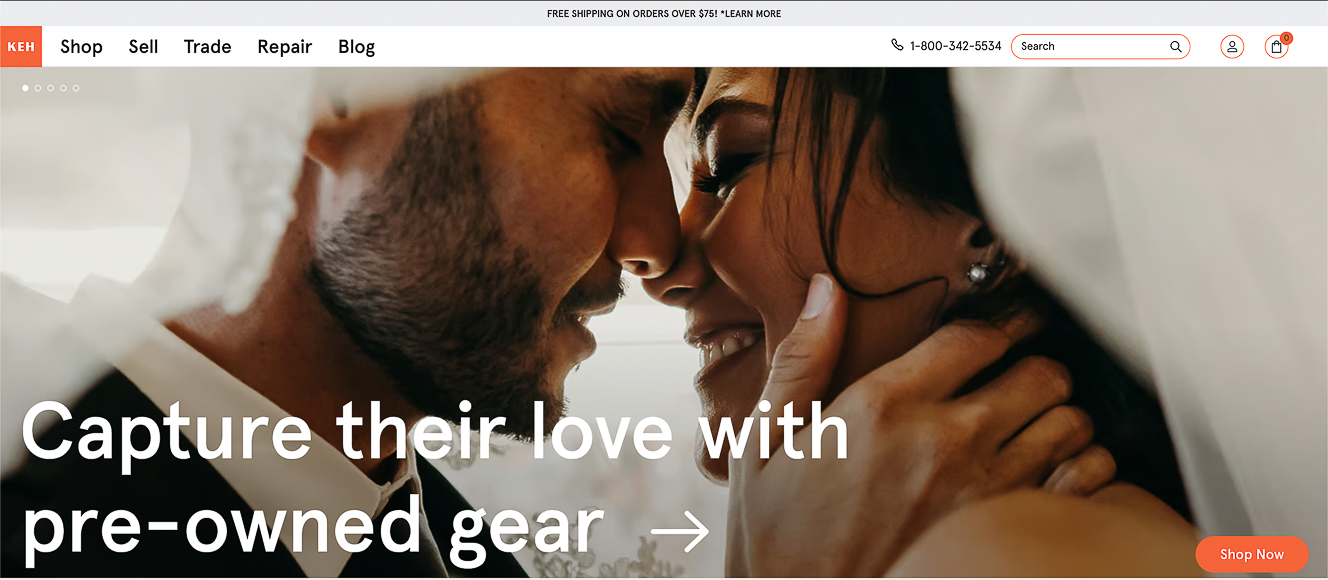
When buying pre-owned gear from a camera store, ensure they’ve tested and cleaned the item before you buy it.
Many camera stores host a pre-owned section on their online store.
However, if you can get into the store to take a look, then I recommend that you do.
Take your camera/lens with you to test out the pre-owned gear for yourself.
If you’re selling gear at a camera store, you may not get the kind of cash you had hoped for.
Camera stores sometimes understate the value of an item so they can pay you less, only to mark it back up for resale.
Always do your homework and check the average price for the same item of similar quality on other selling sites first.
Knowledge is the greatest weapon against a rip-off (an Australian term for someone stealing something of value from you).
eBay
EBay is by far one of the most favoured online marketplaces for buying and selling second-hand Fujifilm cameras, lenses, and accessories.
Moreover, it’s probably one of the most trusted – although it also has dangers lurking in the shadows.
The beauty of a site like eBay is in its convenience and security measures. The process of listing an item for sale on eBay has streamlined over the years.
You quickly search for the product you want to sell and hit the button to Sell One Like This.
If it’s a recognised item, eBay loads a selling template with the specs and item description already populated.
It also advises on the price other eBay sellers list the same product for.
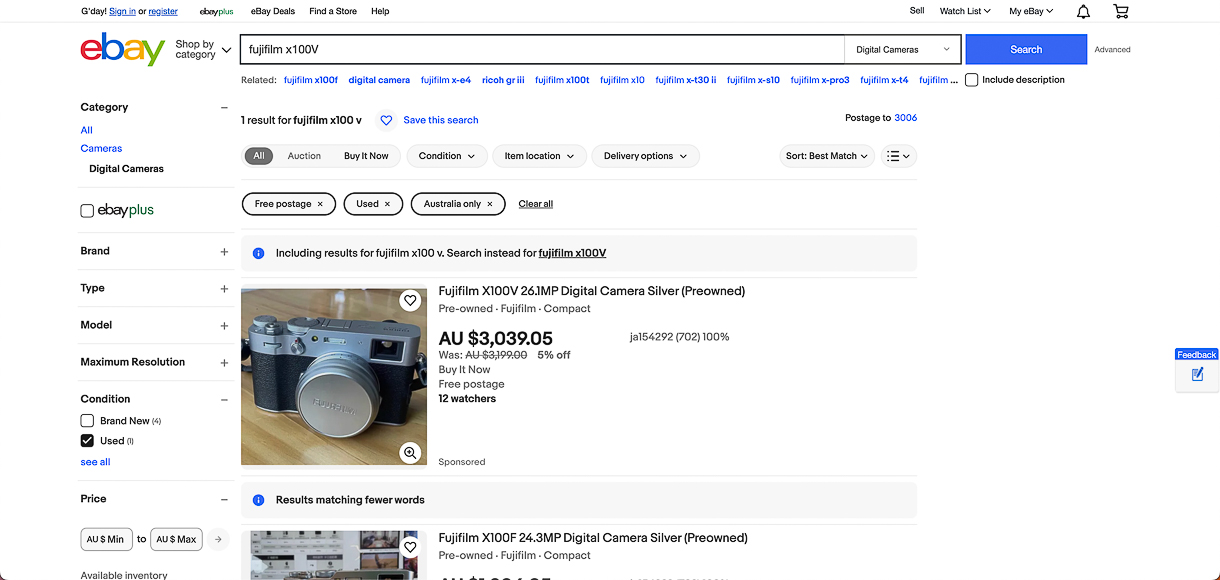
With eBay, you opt for local sale, postage, pick up, insurance, payment terms and the essential payment type.
I only ever list items for sale with a PayPal payment type.
I avoid bank transfers, credit cards, money orders, cheques, or other payment styles. I’m even hesitant to accept cash on pickup if someone local wants to drive by to take a look.
PayPal has proven to be a relatively global and reliable money transfer platform.
While eBay is one of the most popular platforms for trading your Fujifilm gear, it’s not always 100% safe.
Unfortunately, we live in a world of online scammers constantly reinventing the art of scamming people out of their cash.
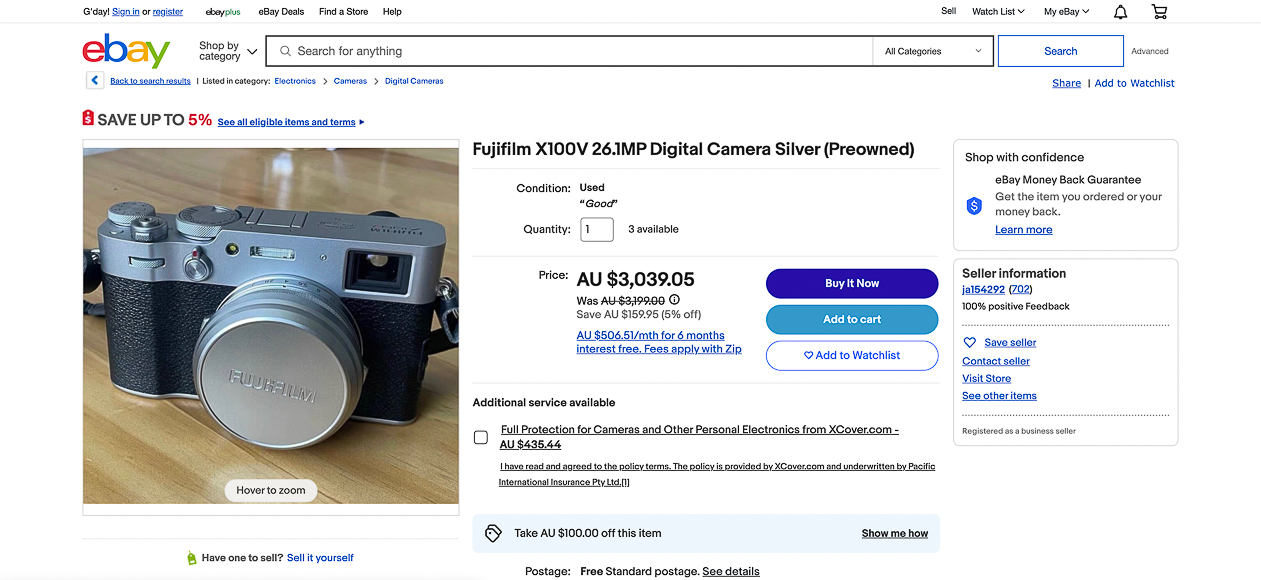
Ebay is no exception, with buyers wanting to negotiate on price or terms of sale, or (and this is the biggest red flag) operate outside of Ebay or attempt to convince you to use an alternative payment method.
To its credit, eBay has safety measures and mechanisms to protect buyers and sellers when things go wrong.
I recommend being wary about the local pick of sold items.
Going to a stranger’s home, or having one come to yours, has risks for personal safety and a negotiation getting out of hand.
Have parcels sent to a post office or postal box if you don’t want to involve your home address.
My final advice is to check the seller’s star rating and any negative reviews.
If they’ve sold hundreds of items and have a 98% rating, chances are they’re good. Do your homework.
Facebook Marketplace
Facebook Marketplace is a fast-growing online trading platform operating within the Facebook social media app.
It’s a handy solution for selling, buying, or even just giving away pre-loved items, from cars to jewellery. And of course, it’s a platform for selling camera gear.
Marketplace uses a fairly simple process to sell or buy second-hand Fujifilm gear.
You list the price, details, condition and category, and upload photos. It’s similar to adding a daily update to your Facebook feed.
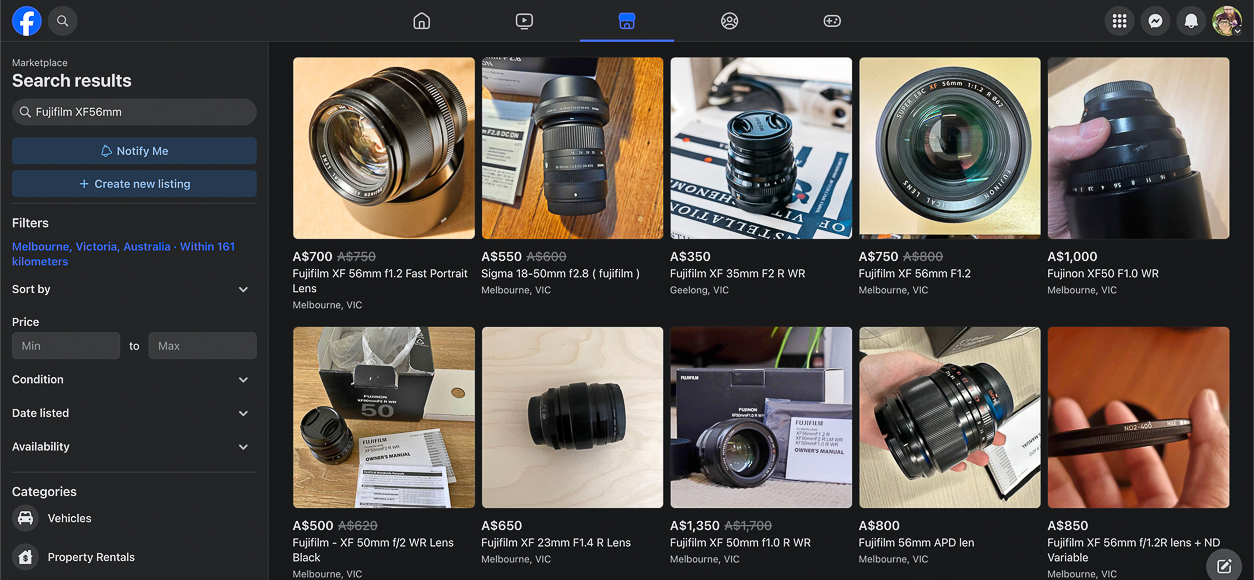
The option exists to pay to boost your ad for greater reach outside of your immediate group of followers.
In my experience, selling and buying on Facebook Marketplace is hit or miss.
Given it’s a free listing, people are not as committed to the process as on eBay.
I have expressed interest in items only for my interest to be ignored and questions to go unanswered.
Potential buyers have shown interest in my items only to become aggressive at negotiation.
Or, if they agree to a sale, they don’t show up again when they ask me to hold something.

My other concern with Facebook Marketplace is the payment process.
Sellers and buyers can make demands that are unreasonable or outside your comfort zone.
This includes the price, delivery preference, delivery charges, and if you can send them the item before they finalize the payment.
Buyer and seller beware!
Honesty Is The Best Policy
When selling your pre-owned Fujifilm camera or lenses, honesty is always the best policy.
I get that you want to raise a little extra cash or trade up to a newer model, but morals have to play a part.
Regardless of the marketplace, it’s important to be exact in listing the specs, description, condition, and quality.
Sites like eBay have buyer protection policies for this reason.
For example, if you appraise an item as being in mint condition and then post out a lens with scratches all over it, you will get a slap on the wrist.
What’s more, the buyer may receive a partial or full refund. Then, they have to agree to post it back to you at your cost.
It’s messy and not worth the hassle.
Being honest about the condition, age, and past use of a piece of Fuji kit is important. Fortunately, Fujifilm cameras and lenses are built tough and they uphold their resale value.
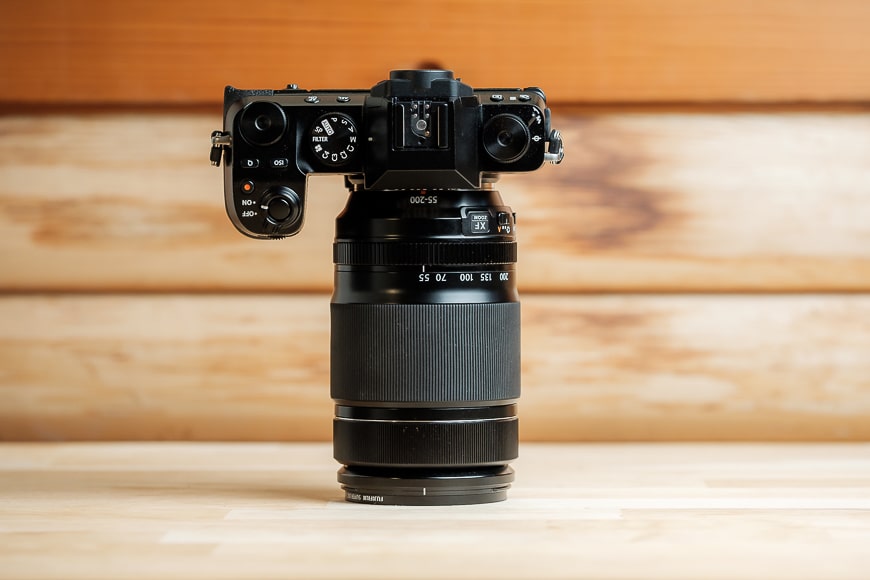
It takes a lot to scratch, dent, or fault a Fujifilm camera.
However, if your camera or lens has signs of use, you must list them.
List all the scratches as surface or deep and mark the specific location.
The same goes for the internal workings. If the camera is fully operational, be sure to say so. However, if the camera has mechanical or software faults, you must list them.
When listing used photography equipment for sale, recognising the flaws in your kit may impact the price.
However, the risk and potential shenanigans involved are high if you overlook the less-than-desirable qualities of your sale item.
Another handy tip is to ensure that you mention if you’re the original owner, if it has seen much use, and also the shot count.
Digital image shutters are typically rated to a certain number of shots in their lifetime.
For example, the Fujifilm X-T5 will shoot a mechanical shutter burst at up to 15fps (frames per second), with a max mechanical shutter speed of 1/8000. It boasts up to 300,000 shutter actuations.
If you’re a wedding or sports photographer who shoots in burst mode, you’ll likely have already used up much of the shutter life.
The same applies if you’re buying a pre-owned camera – ask for the shot count or how many shots it has taken.
Details Count When Selling Or Buying Second-Hand Fujifilm Gear
When listing your items for sale on a second-hand market, it’s important to be very specific with the details.
Assuming that everyone has the same knowledge as you, or more, is a quick way to lose potential buyers.
List the camera or lenses in detail, including the product description and specifications as they appear on the brand website.
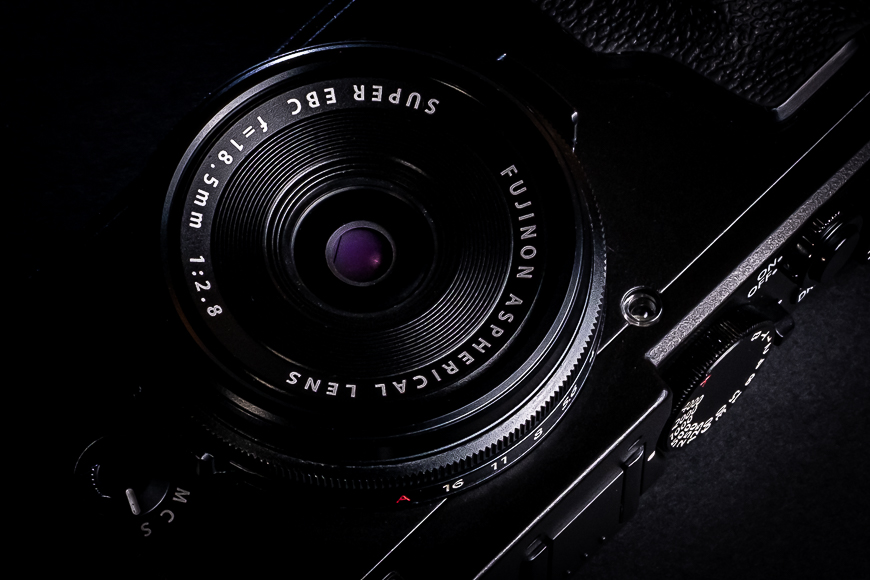
Whenever I list an item for sale (must like when I write articles here for Shotkit), I always go to the Fujifilm website to copy the specs to ensure accuracy.
It’s not unethical to copy and paste the details onto your selling platform – but list any performance issues too.
Another handy tip is to add your personal touch to the listing to say what you found the camera ideal for and what genre you shot.
Buyers will be inspired by the short description.
Great Photos Sell
Another key element of selling your Fujifilm gear is to include lots of photos.
Photos should always be up close, well-lit, and not obstructed by other clutter.
Take the photos on a flat work surface like a desk or countertop.
For cameras, photograph the rear, front, two sides, and the top (while you’re at it, photograph the base too!).
Be sure to take a close-up shot of the sensor to demonstrate obvious spots or scratches.
To achieve the best shot of the sensor, remove the lens from the mount, and photograph the sensor at a 45-degree angle.
You’ll need enough light to clearly show its green/purple hue and surface.
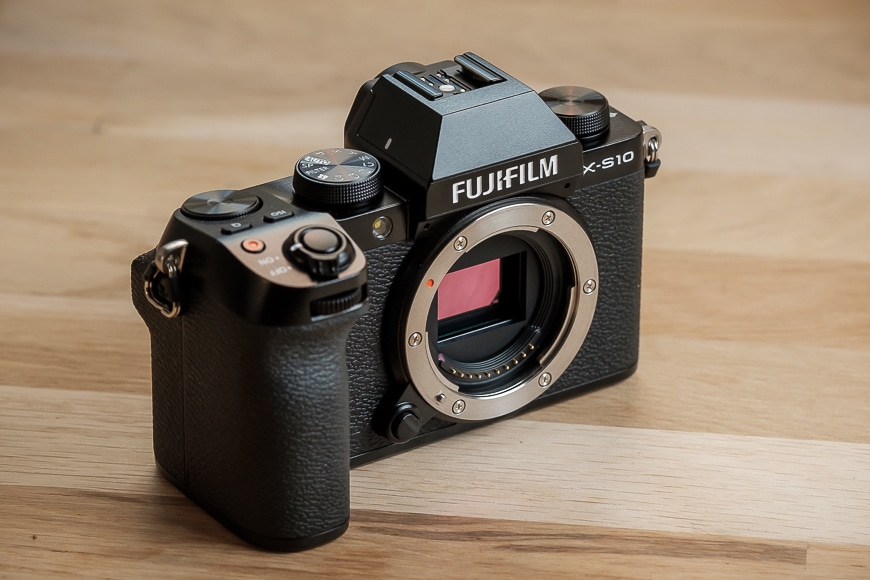
If you’re including the box, cloth bags, instructions, cables, and or chargers with your sale, list them specifically and include images.
It’s also important to state if accessories are genuine Fujifilm products or third-party.
The same applies when selling Fujifilm lenses.
Be specific with the details and specs, and take photos of the lens from all sides and the two ends.
Include close-ups of the front and rear lens elements to demonstrate if they have scratches.
You have less control over the details of a piece of preloved Fujifilm gear you’re considering buying.
If a for-sale ad is a single line with the camera name and a price, avoid it like the plague.
I have found that these listings are downright dodgy (an Australian term for corrupt, illegal, or fake)!
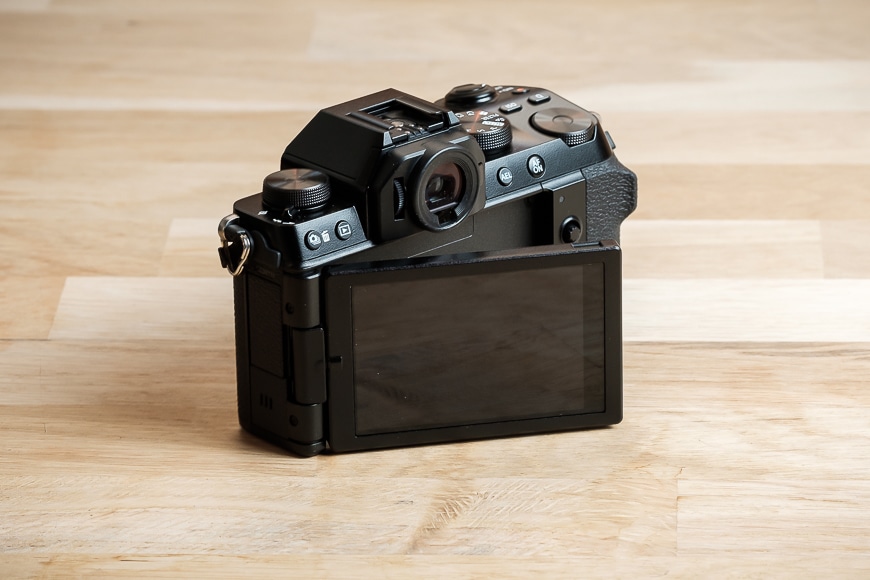
However, if there’s a sale item you’re interested in but the details are sparse, use the site’s option to contact the seller.
If they want your money, you can ask for specifics, conditions, age, obvious marks or scratches, working order, and more.
It’s also completely ok to request more images – especially with sellers that post a single image or blurry, dark images. Not good enough!
Show Me The Money
The scariest bit when trading second-hand Fujifilm cameras or lenses is the exchange. It’s a perilous step especially given the increased scams and dodgy business.
Knowledge is everything here! I can’t emphasize enough that you must do your homework before you start the process.
The first step is to understand what your gear, or the gear you want to buy, is worth second-hand.
Be realistic about the condition of the gear and search other online marketplaces or camera stores to get a ballpark price range.
If you’re comfortable with the price range, do your homework to understand where you’ll get the best value for money.

Is the community sale to a mate, for a slightly lower amount, worth it compared to a stranger on Facebook?
Is the option to trade your gear at a camera store and get a reduced price on a new piece of kit attractive?
Ask yourself what feels safe and secure, and how you want to handle a transaction.
When posting items, remember to include postage, handling, tracking, and insurance – a signature on delivery is good too.
Never use a mailing envelope as they provide zero protection.
Even when sending the Fujifilm camera or lens in its original box, bubble wrap the box, and then put it in a mailing box.
If it doesn’t have its OG box, wrap the camera in bubble wrap, box it, and repeat if you’re concerned.
It’s an essential part of the cost of doing business and it’s ok to ask sellers to take similar care – provided you’re willing to pay the extra costs.
My Top Tips For Buying And Selling Pre-Owned Fujifilm Gear
- Research: Do your homework on reputable and safe platforms to buy and sell second-hand Fuji kit. The examples above are among a few – different markets exist for different regions.
- Honesty: It’s the best policy for listing your items for sale on any platform. It’s essential to be honest about an item’s flaws and faults just as you are about its selling points.
- Be Money Wise: Protect your hard-earned cash using trusted fund transfer options – especially those recognised by the online platform.
- Trade In-Store: Camera stores will likely pay you less than an online marketplace, but the convenience of store credit for your new purchase can be hard to turn down.
- Photos Sell: Always use and demand lots of photos when selling or buying your Fujifilm pre-owned gear. The devil can be in the details.
- Scammers: If a sale feels too good to be true – there’s a good chance it is. Be wary of the scams going around in all online marketplaces and seek references, check customer feedback/reviews, and trust your gut instinct.
- Safety: Be cautious with face-to-face sales, especially if they take place in your home or at a seller’s home. Play it safe and meet somewhere neutral and public if possible.
- Postage: If posting items, wrap and box them for maximum protection and apply mailing services such as insurance and tracking.
Frequently Asked Questions
How do I prepare my camera to sell?
Before listing your camera for sale, pop in a battery and SD card and ensure it all works.
It’s also important to clear your camera, reset the memory, and ensure the sensor is free of dust and marks.
Do cameras keep their value?
An item’s quality, condition, and the buyer’s needs determine its value.
Your first-generation Fujifilm X Pro1 might be old, but there’s a buyer for everything and you’d be surprised how well Fujifilm cameras hold their value.
Is it OK to buy second-hand lenses?
Yes, provided you do your homework and buy from a trusted seller.
Always request close-up photos and a detailed condition report of the front and rear lens elements.
How do I stay safe on Facebook Marketplace?
Never share your personal information, such as phone numbers or email, with a buyer or seller.
Communicate via Messenger and ask for specific details about the item, transaction, terms, and money exchange.
Final Thoughts
Regardless of GAS or FOMO afflictions, there’s no denying the joy that comes from acquiring a new Fujifilm camera or lens.
Whilst it may be second-hand to someone else, it’s still a new bit of kit to you.
I’m a big believer in shooting with what you already have.
However, there comes a time when you need to upgrade or expand.
Upgrading may mean looking at selling your original Fujifilm X100 and picking up a Fujifilm X Pro2 second-hand.
Expanding may mean purchasing a pre-loved Fujifilm XF 35mm f/2 to accompany your 18-55mm kit lens.
If you’re thinking, “Where can I sell my camera for cash near me?” – don’t rush the process. You have options available to you.
The key to selling, buying, and trading your Fujifilm photography equipment is to take time, do your homework, arm yourself with knowledge, and take necessary precautions.
So what about you, dear reader? Have you ever bought or sold Fujifilm gear on a second-hand market?
If so, what was your experience – any cautionary tales to share?
Please feel free to comment below to join the conversation.
- Related: Why Do Photographers Love Fujifilm?

Check out these 8 essential tools to help you succeed as a professional photographer.
Includes limited-time discounts.







